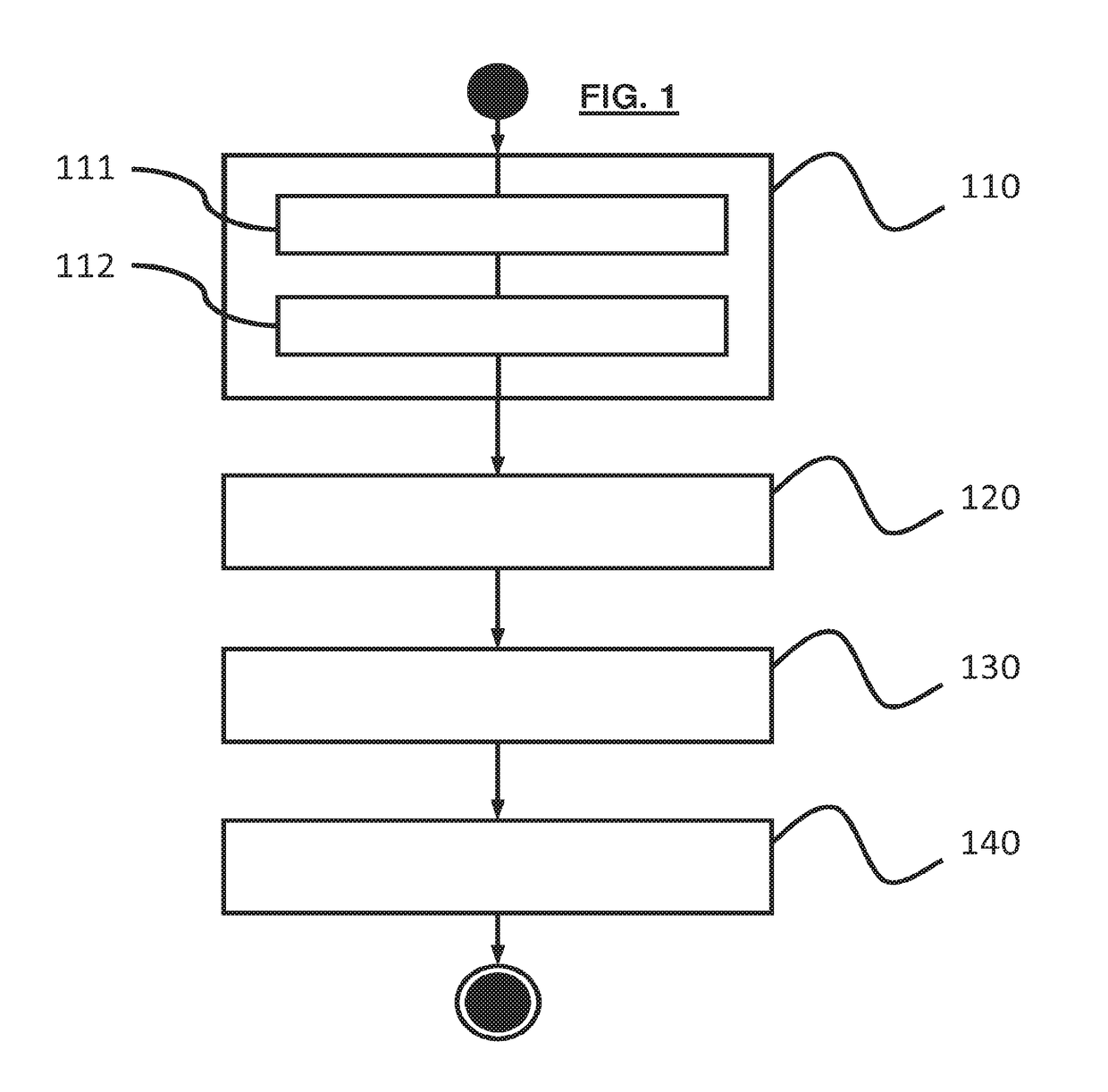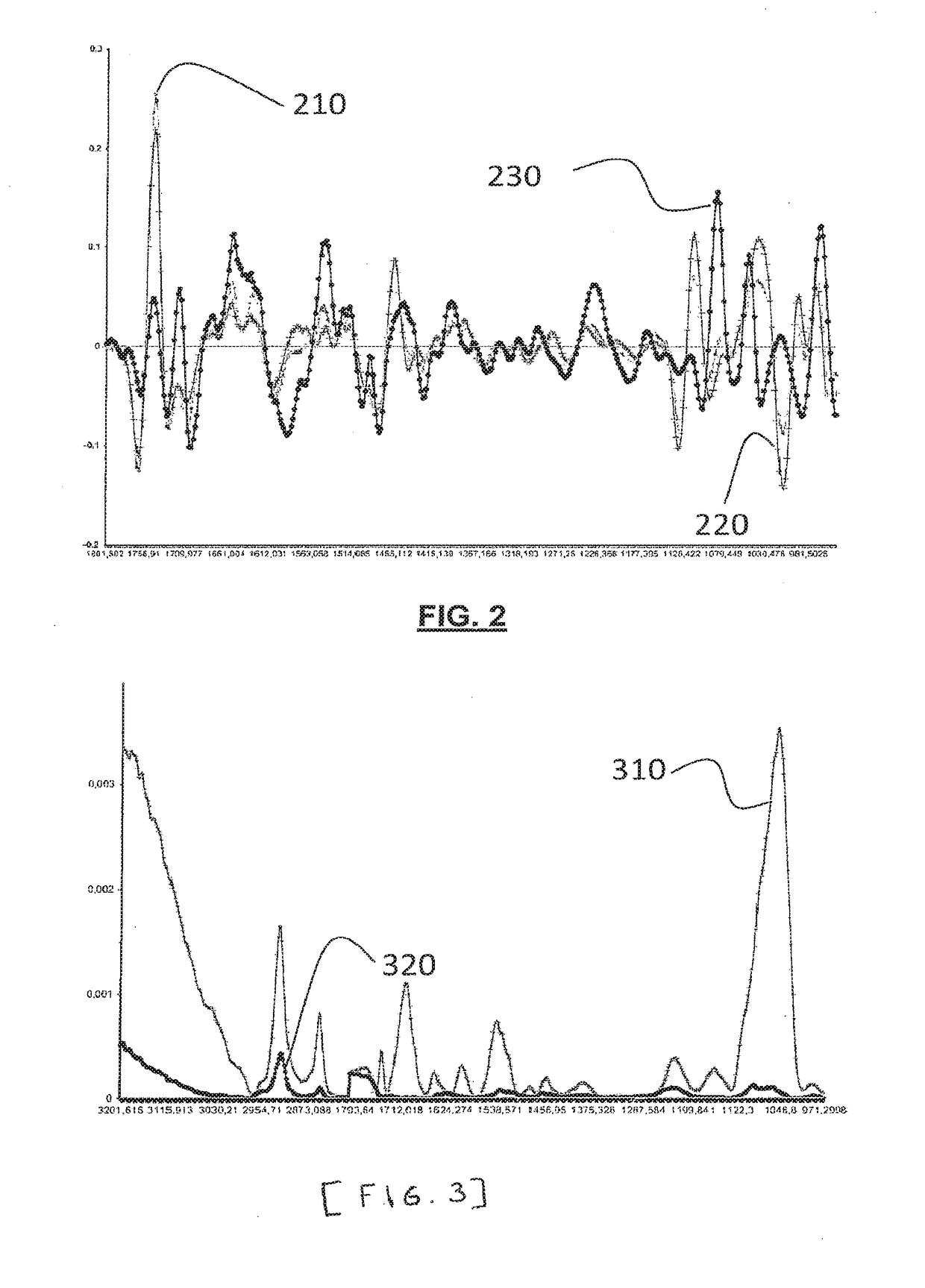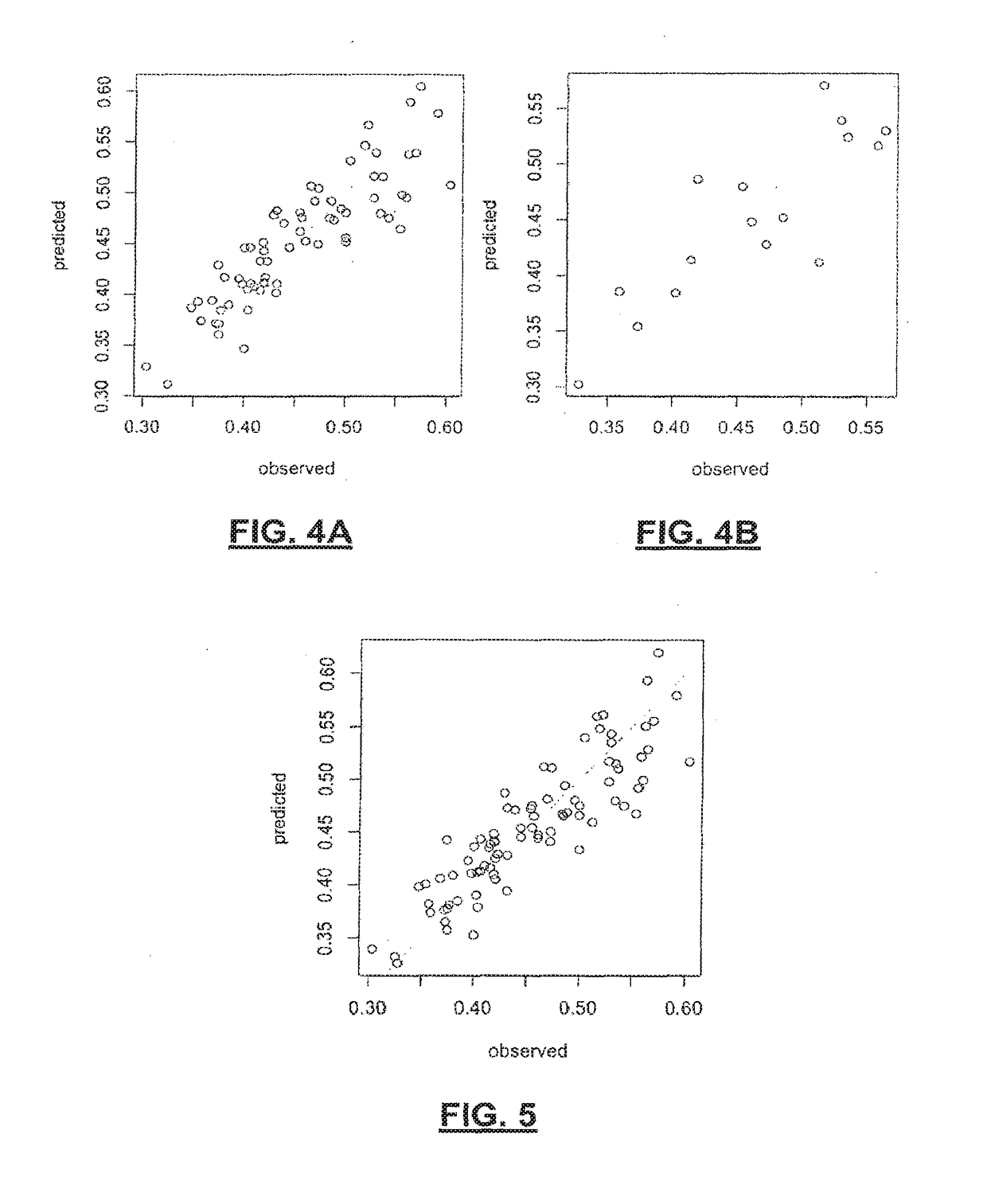Method for determining the quality of a semen of a vertebrate animal
a technology of semen and quality, applied in the field of breeding, can solve the problems of negative impact on the profitability of the farm, direct impact on the annual milk production of the animal concerned, and considerable challenge for analytical laboratories and semen producers, and achieve the effect of easy implementation
- Summary
- Abstract
- Description
- Claims
- Application Information
AI Technical Summary
Benefits of technology
Problems solved by technology
Method used
Image
Examples
Embodiment Construction
[0075]6.1. Experimental Protocol
[0076]The samples analysed are bovine ejaculates in the form of straws, preserved in liquid nitrogen. Preliminary analyses were performed on 130 ejaculates from 50 different bulls from the Prim′Holstein breed. The NRR90 gross indicator was used to qualify the quality of ejaculates.
[0077]6.1.1. Sample Preparation
[0078]During the sample preparation stage, in a first step, straws are thawed in a water bath at 37° C. for 30 seconds. In a second step, the straws are analysed. For this, the contents of the straws are placed in a 1.5 ml Eppendorf tube. Seven microliters are then deposited on the sensor for MIR spectral acquisition of a “straw”. In a third step, a supernatant is extracted by centrifugation at 3500 g for 5 min at 15° C. The supernatant is then deposited on the sensor for the acquisition of the “supernatant” spectrum. In a fourth step, the pellet is rinsed with 600 μl of 0.9% NaCl and centrifugation is then performed. The pellet is again suspen...
PUM
| Property | Measurement | Unit |
|---|---|---|
| radiation wavelength | aaaaa | aaaaa |
| radiation wavelength | aaaaa | aaaaa |
| absorption spectrum | aaaaa | aaaaa |
Abstract
Description
Claims
Application Information
 Login to View More
Login to View More - R&D
- Intellectual Property
- Life Sciences
- Materials
- Tech Scout
- Unparalleled Data Quality
- Higher Quality Content
- 60% Fewer Hallucinations
Browse by: Latest US Patents, China's latest patents, Technical Efficacy Thesaurus, Application Domain, Technology Topic, Popular Technical Reports.
© 2025 PatSnap. All rights reserved.Legal|Privacy policy|Modern Slavery Act Transparency Statement|Sitemap|About US| Contact US: help@patsnap.com



